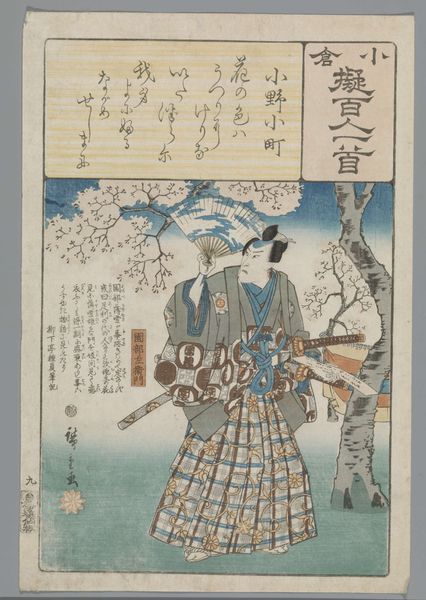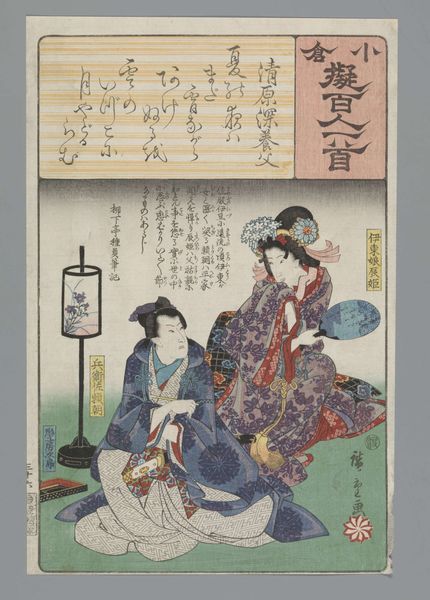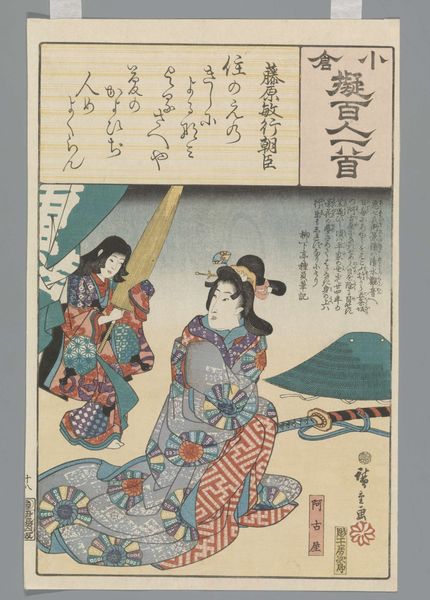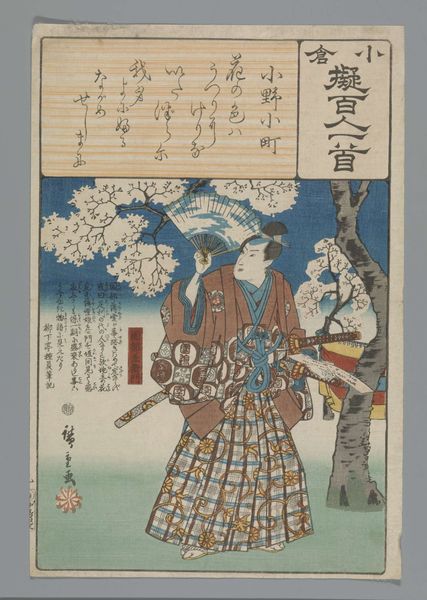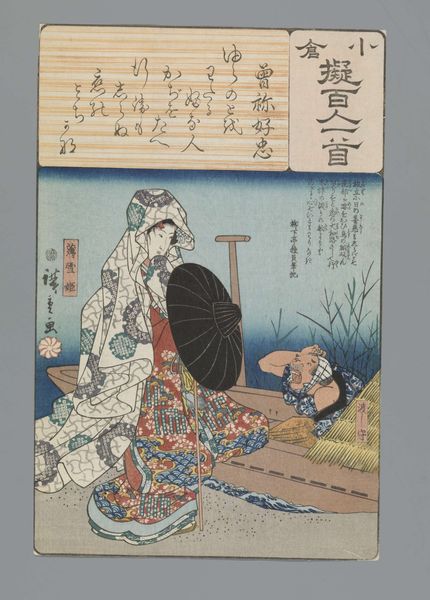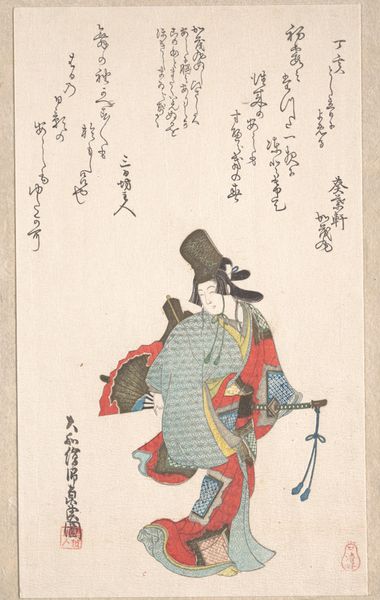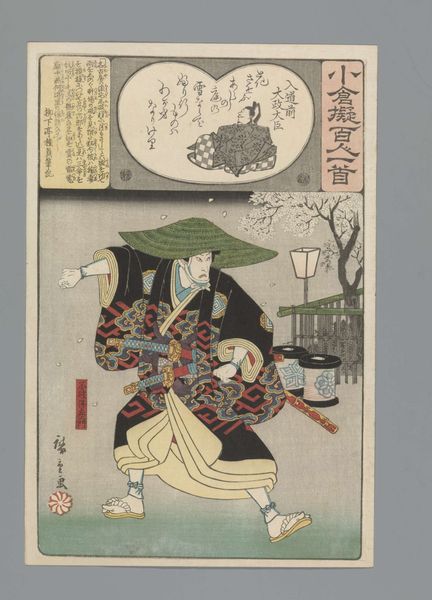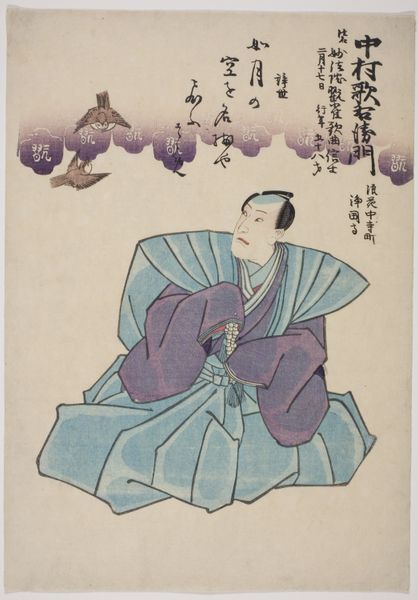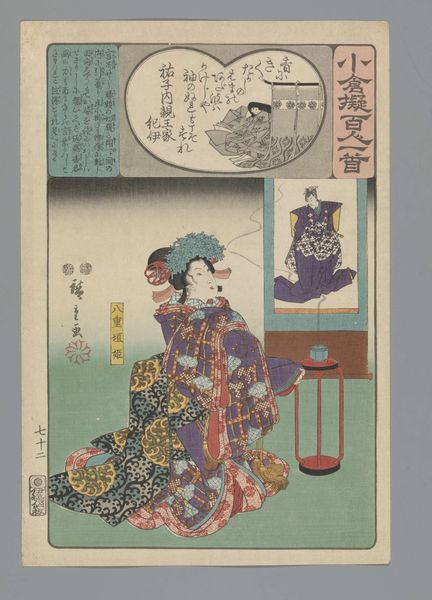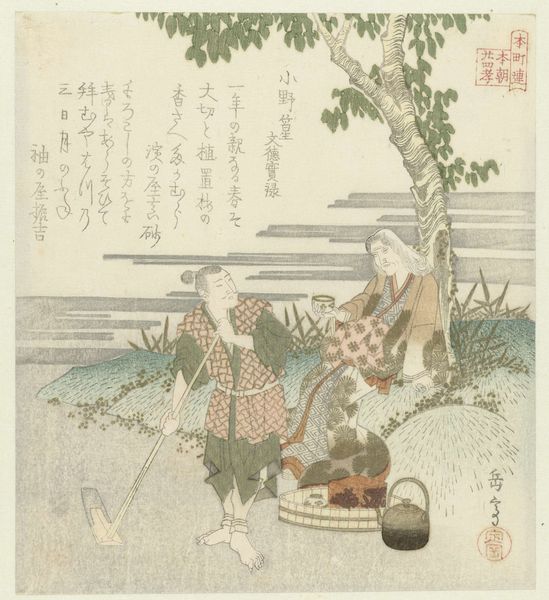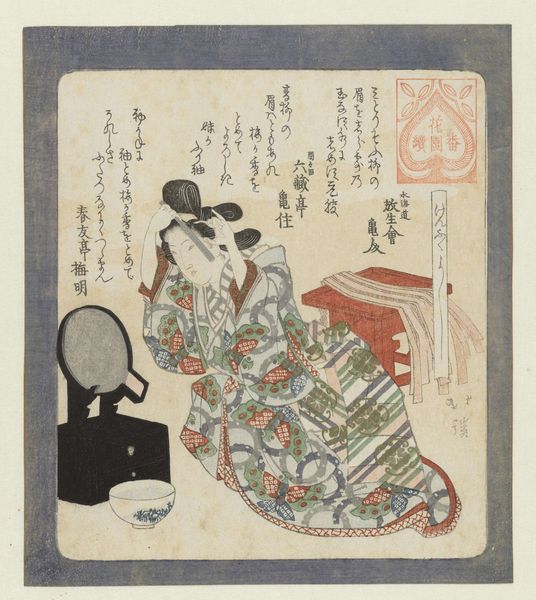
print, woodblock-print
#
portrait
# print
#
landscape
#
ukiyo-e
#
figuration
#
woodblock-print
#
mountain
#
watercolor
Dimensions: height mm, width mm
Copyright: Rijks Museum: Open Domain
Curator: At first glance, this woodblock print feels so self-contained, doesn't it? A world shrunk down into vibrant colors and sharp lines. There's a wistful, quiet energy about it. Editor: This is "Ogura Imitation of the One Hundred Poems," a print from the mid-1840s by Utagawa Hiroshige. It's a striking example of ukiyo-e, a genre deeply ingrained in the socio-political landscape of its time. Think of it as a carefully constructed piece of visual poetry reflecting popular culture. Curator: The figure sitting there with her fan, isn't she lovely? Her robe just seems to melt into the ground and then pull us toward that ghostly landscape backdrop, a serene blue dreamscape. The butterfly patterns are adorable and mesmerizing! I can sense her solitude. Editor: Right, she is probably a high-ranking woman enjoying this peaceful scene. This particular print showcases a fascinating interplay between elite culture and popular art. The poems were touchstones of cultural capital, accessible to a wider audience through prints like these. We see not only a figure that exudes stillness but also that mountain sitting like a still backdrop; it seems all about that quietness that powerful people want. Curator: But there’s something playful too, though. Those bold reds and blues! It’s all at once, you know, sophisticated, yet completely approachable. Does the landscape echo a particular place in the sitter's life? Editor: Precisely. The landscape acts as both setting and symbol. The references to "One Hundred Poems," was very interesting because in that context, gardens and landscapes were places of poetry readings and musical gathering; it's all very much on display through this artwork. It’s all about visually communicating status through an accessible artistic medium. It became part of how identities were negotiated and displayed in the 19th century. Curator: I just keep coming back to that solitary figure lost in her own beautiful thoughts. And with all the layered social commentary that the setting and accouterments entail, it’s fascinating to feel this echo across the ages. It makes you want to peek in on all the social dramas going on around us now, through a little poetic lens. Editor: Yes, its endurance lies in its ability to transcend its specific time. We see not just a slice of 19th-century Japanese society, but a broader story of how art shapes identity and makes social values visible, don't you think?
Comments
No comments
Be the first to comment and join the conversation on the ultimate creative platform.
